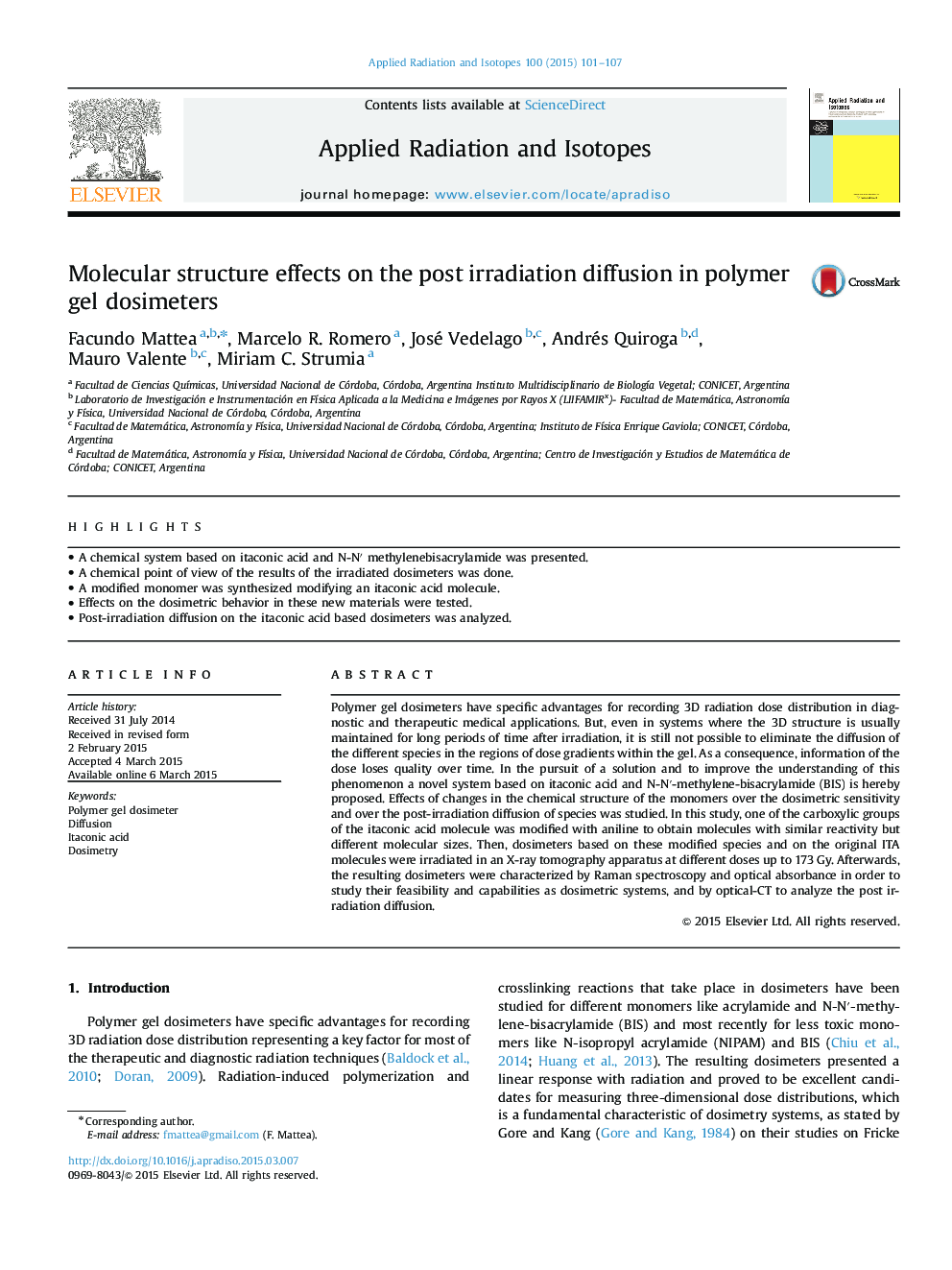| Article ID | Journal | Published Year | Pages | File Type |
|---|---|---|---|---|
| 1878995 | Applied Radiation and Isotopes | 2015 | 7 Pages |
Abstract
Polymer gel dosimeters have specific advantages for recording 3D radiation dose distribution in diagnostic and therapeutic medical applications. But, even in systems where the 3D structure is usually maintained for long periods of time after irradiation, it is still not possible to eliminate the diffusion of the different species in the regions of dose gradients within the gel. As a consequence, information of the dose loses quality over time. In the pursuit of a solution and to improve the understanding of this phenomenon a novel system based on itaconic acid and N-Nâ²-methylene-bisacrylamide (BIS) is hereby proposed. Effects of changes in the chemical structure of the monomers over the dosimetric sensitivity and over the post-irradiation diffusion of species was studied. In this study, one of the carboxylic groups of the itaconic acid molecule was modified with aniline to obtain molecules with similar reactivity but different molecular sizes. Then, dosimeters based on these modified species and on the original ITA molecules were irradiated in an X-ray tomography apparatus at different doses up to 173Â Gy. Afterwards, the resulting dosimeters were characterized by Raman spectroscopy and optical absorbance in order to study their feasibility and capabilities as dosimetric systems, and by optical-CT to analyze the post irradiation diffusion.
Related Topics
Physical Sciences and Engineering
Physics and Astronomy
Radiation
Authors
Facundo Mattea, Marcelo R. Romero, José Vedelago, Andrés Quiroga, Mauro Valente, Miriam C. Strumia,
